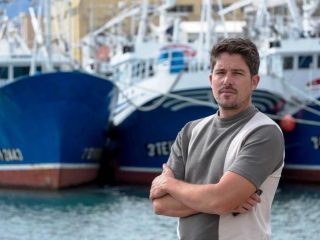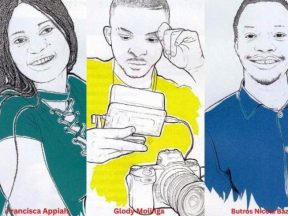Middle East 2018 Perspectives.

The year 2018 could See Current Middle East Tensions Reach Their Inevitable Bloody Conclusion.
The Middle East has been a center of tension and instability since the end of WW1. Even then, 2017 stands out as being an especially tense year for the region. There are many open conflicts and growing tensions between Iran and the United States and a new instability in the Gulf region, even as the war in Syria is ending, leaving President al-Asad in power. That may prove to be a short lived victory. However stress filled 2017 was for the Middle East; 2018 is shaping up to be worst.
Jerusalem and the Palestinian Question return to the Fore
The mere signature of a single document has altered expectations for the Middle East in 2018. U.S. President Donald Trump has approved a Law that had existed since 1995, a period when there was still optimism for the Oslo Accord Israeli-Palestinian Peace Process, to move the American embassy in Israel from Tel Aviv to Jerusalem. All of Trump’s predecessors understood the implications of such a step: no less than a full recognition of Jerusalem as Israel’s capital. This step, in the logic of the U.S. being a ‘neutral’ broker, should only have come at the end of a comprehensive and signed peace agreement between Palestinians and Israelis.
The effect on the rest of the Middle East – the whole Islamic world in fact – will be significant. At its heart the focus of attention in the region could shift back to the Palestinian question and away from the brewing Iran-Saudi conflict. Or, more likely, the U.S. recognition of Jerusalem will exacerbate tensions between Iran, Israel and Saudi Arabia, spilling into a proxy conflict involving on one side Hamas (and possibly the Palestinian Authority – PNA) and Hezbollah on the other.
It’s unclear whether Trump had been briefed about the risks he has taken. Until a few weeks ago, the situation in Palestine was showing enough promise to suggest that Hamas and the PNA could have reached a compromise in 2018, bolstering the chances of a resumption of peace talks. At the end of November 2017, Palestinian President Mahmoud Abbas’s Fatah and Hamas agreed to hold national elections by the end of 2018. A reconciliation in that sense would have allowed General al-Sisi’s Egypt to forego his concerns about Hamas’s ties to the Muslim Brotherhood. Elections would have gone a long way toward releasing the population of Gaza from an embargo that has lasted for over ten years. Now, the ‘smart money’ is on tensions in the region reaching the point of another (the Third) intifada.
Trump’s Foreign Policy
To understand how the new United States stance on Jerusalem will affect the Middle East in 2018 and beyond, it’s first necessary to understand the foreign policy that Trump is pursuing. Trump’s electoral slogan was ‘America First’. In that sense he is pursuing more ‘realistic’ and less idealistic targets.
Under Trump the United States will focus more on protecting American interest and security rather than exporting democracy. President Obama tried to pursue a version of this policy. Obama had the misfortune of having inherited a number of foreign quagmires from his predecessor, George W. Bush in Iraq and Afghanistan, not to mention the ‘war on terror’ – it’s difficult to wage war against an abstract noun. Still, Obama was hesitant to engage directly in regime change operations, preferring to wage war by proxy. Such was the case in Syria, for example.
Trump, more than Obama, appears to be focusing on fulfilling his electoral promises and satisfying, if not all Americans, his most solid base of support. It is in this context that the Jerusalem recognition must be analyzed. In choosing to move the American embassy from Tel Aviv to Jerusalem, Trump was able to satisfy the evangelical Christians who believe that the apocalypse will begin when the Third Temple is built on the site of the ‘Temple Mount’. Trump has also fulfilled the desires of his biggest electoral campaign donor, Jewish-American billionaire and Las Vegas casino owner Sheldon Adelson and the many American Zionists who are a major force behind the Israeli settlements in Palestinian territories that make a two-state solution so difficult, even if the political will to achieve it existed in the Knesset.
From this, it can be deduced that Trump is disengaging from the Middle East. He’s done his part; it’s now up to the others in the region to clean up the mess. The PNA president Abbas has already stated he won’t meet U.S. Vice President Pence when he will visit the region at the end of December. Frankly, it seems impossible for anyone to regard Washington as an honest or neutral broker in Middle East peace now. It’s possible that Trump’s son-in-law and adviser (whose own family construction business has profited from Israeli settlements) has worked out a deal with Saudi Prince Muhammad bin Salman (MbS) for Saudi Arabia to offer a substantial cash offer to Mahmoud Abbas to accept a Palestinian State, even smaller than what the current crumbs would entail. It’s unlikely, especially in a context of a Hamas-PNA reconciliation, that Abbas will accept such a literal sellout. Trump may have stated that he wants a “great deal for the Israelis and a great deal for the Palestinians”. Yet, a look at any map of the potential Palestinian State that the Israelis would allow now, suggests there’s only a ‘terrible deal’ in store.
Who Will Replace the United States in the Middle East?
That role is up for grabs; China or Russia will probably step in, but gradually, to do this in 2018. Russia has just helped Syria – and the world – rid itself of the ISIS plague. It has established close ties to all parties concerned from Turkey to Israel itself. As for the United States, it will only interfere where matters it thinks affect its national security. Where the Middle East is concerned, this translates to Israel’s security – or its perception. In other words, the U.S. will not purse the cause of Kurdish nationalism in Syria – as Obama’s administration was doing and Hillary Clinton would probably have done. Washington has already shown no support for the Iraqi Kurds when they stage their sovereignty referendum last September.
The U.S. and Saudi Arabia must have expected dismayed reactions to the Jerusalem announcement. They know that the Arab States that have signed peace agreements and established diplomatic relations with Israel will come under significant pressure in 2018. Egypt and Jordan are those States. Egypt’s President al-Sisi may have to come to terms with Hamas, even as he faces opposition from the Muslim Brotherhood (now operating underground) domestically. Jordan, whose Muslim Brotherhood remains an important and recognized political party in Parliament, will surely put pressure on King Abdullah to sever ties with Israel.
The Saudis will probably have already agreed with the Trump administration to ‘lubricate’ any resulting frictions by offering lavish injections of funds into the respective States’ coffers. Al-Sisi, in public, must show defiance against the Jerusalem decision or face electoral defeat in the summer of 2018 and/or an exacerbation of domestic violence. The need for funds will be even greater for Jordan, whose predictable rise in tension could prompt a sharp decline in tourism and related revenues. The alternative for Egypt or Jordan would be to face a backlash from the Saudis and their Gulf allies, which would imply enduring the tensions alone. Still, there’s one player that the Americans had not considered.
Washington Wants Isolation of Teheran
Qatar will focus its effort on sustaining the allies of Hamas. No wonder the Saudis isolated it in June 2017. Indeed, in 2018, Qatar will likely move even closer to the Iranian camp, which would also help stabilize Syria. Qatar was one of the main sponsors of the various Islamist militias operating in Syria and now being relegated to a few pockets as Asad’s loyalists regain control. Qatar, which is looking for an ever grander international presence (it will host the FIFA World Cup in 2022), has an opportunity to shine becoming the prime sponsor of the Palestinians.
Still, the United States will remain vigilant when it comes to expanding Iranian and Russian influence. Washington is convinced that Iran wants to create a ‘corridor’ from Teheran to Beirut, trying to impose Shiite hegemony throughout the Middle East. Should Haider al-Abadi, who faces voters in 2018, move too far in Tehran’s lap, facilitating the ‘Shiite corridor’, the United States could intervene, and applying pressure through the Kurds. Meanwhile, there seems little doubt that Trump will also scrap the Iran nuclear deal in 2018. It was one of his election promises.
After the Jerusalem decision, Israel will have become even more concerned of Iranian retaliation. Lebanon should hold elections in 2018. Beirut was supposed to have called general elections in 2014 but the political crisis marked by the failure to elect a new President until 2017 and the war in Syria prompted the delay. The Americans – through the Saudis – will try to exert pressure through the Sunnis and Prime Minister Saad Hariri, whose role and power has become more ambiguous after the virtual ‘kidnapping’ in November 2017.
It may not come to that. The Israelis, Americans and Saudis have haste. They want to stop Hezbollah and the Shiite crescent from developing long before the summer of 2018. After all, Iran has also been a thorn on the Saudis’ flank in Yemen, where the civil war has taken another turn in favor of the Houthi rebels after the assassination of former President Ali Abdullah Saleh after he decided to switch allegiances.
The realignment of forces in the Middle East, characterized by Iran’s progressively rising influence from the Persian Gulf to the red Sea and the Mediterranean troubles Saudi Arabia and the United Arab Emirates. All it will take is a few Iranian made missiles landing near Riyadh, launched by Tehran’s allies (or from Hezbollah into Israel) and the Saudis could start using all the military toys they have recently bought from Uncle Sam against direct Iranian interests. Trump won’t necessarily intervene directly. He will be able to use tools like the nuclear deal and military support to help its allies fight of the Iranian ‘threat’ as the rivalry between Saudi Arabia-Israel and Iran sharpens.
Damascus’ success in reclaiming control over most of Syria, the demise of Islamic State and the Turkey’s increasing penetration in the Iranian –Russian sphere will bring these States to a dangerous crossroads in 2018. Finally, there’s another conclusion from the Jerusalem fallout that Trump and Netanyahu may not have considered. If there’s one issue that could unite the Arab world – however fleeting the chance – it might be Jerusalem. The Arab League, as happened in the 1973 oil embargo championed by the Saudis in retaliation for the Yom Kippur war, has been crippled. As for, Qatar, with Iran’s help might be able to build up sufficient diplomatic and regional pressure to either prevent a repeat of the 1982 Israeli -Shiite-Sunni war (most likely fought in Lebanon) or to cause the Saudi Crown Prince, Trump’s son-in-law Kushner and Bibi Netanyahu to reconsider their plans.
Alessandro Bruno














